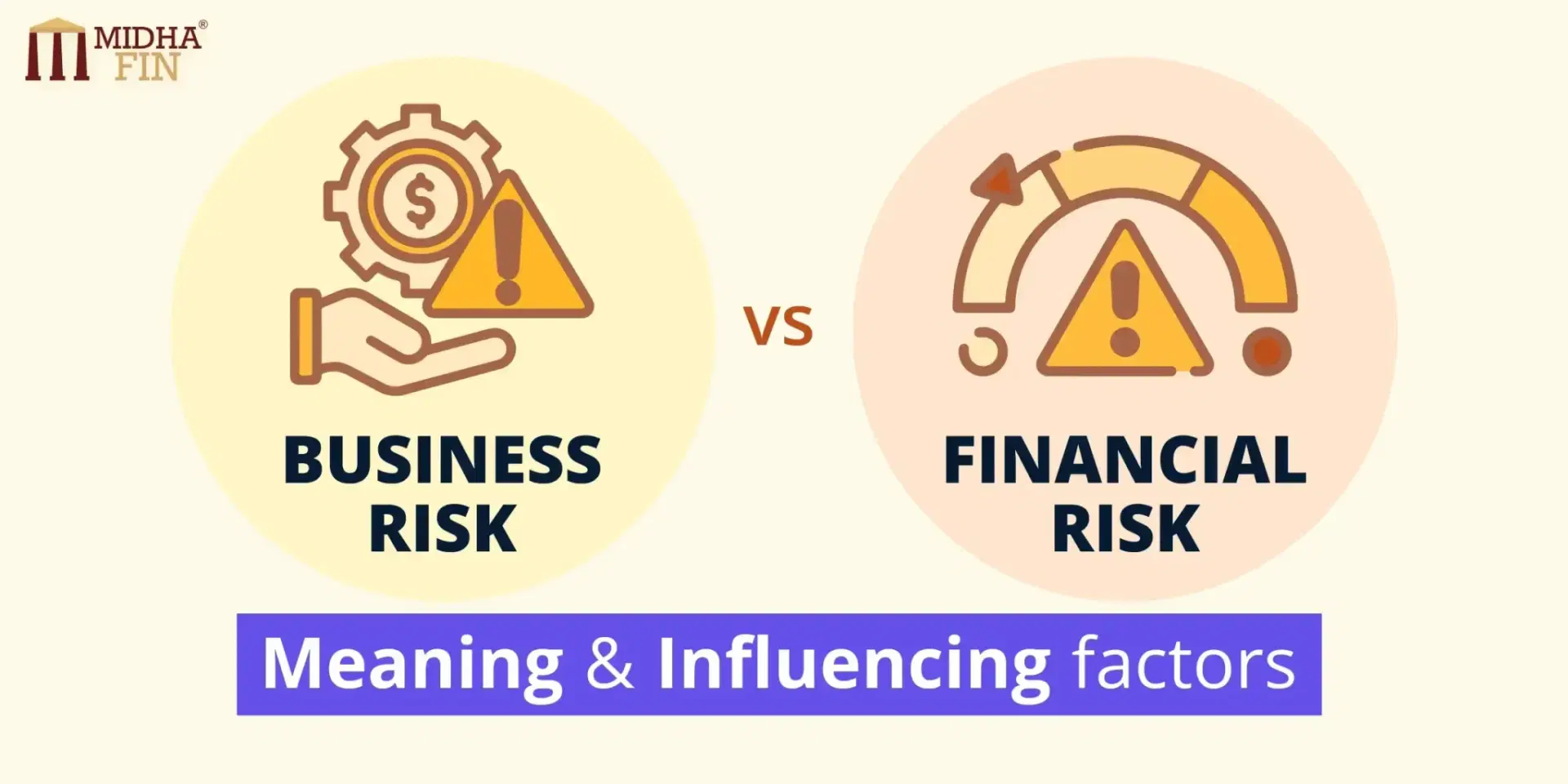Risk Management
Business Risk vs Financial Risk- Meaning & Influencing factors.

Overview
Any Corporation managing the business operation has to face a variety of challenges involved in a dynamic risk environment. Amongst the several types of risk, Business risk and Financial risk are among the most important risks that the firms need to manage. In this article, we will define and delve deeper into these two kinds of risk, in the context of factors influencing these risks and key differences between them.
Business Risk – Interpretation
Business risk is the exposure a company or organization has to “factors that will lower its profits or lead it to fail”. Anything that threatens a company’s ability to achieve its financial goals is considered a business risk.
Business risk refers to the viability of the business in terms of revenue generation so that it is enough to meet various operational expenses and eventually create profit for the firm.
Business Risk-Influencing factors
1. Demand for Products/Services
The demand for products/Services offered by the firm directly influences the Business risk as in the case of Lower demand, it will directly hamper the revenue of the firm and increase the business risk.
It will be more stringent on the part of the firm to manage its operations and create profits in case of low demand. So, in general, Higher demand reduces business risk and as the demand reduces, there is an increase in business risk.
2. Level of Competition and Linked Profit Margins
A high level of competition in any industry directly impacts the profit margin of a firm in a negative manner. In order to survive in such an environment, the pricing wars create a lose-lose situation for all firms within an industry and directly impact profit margins, which impacts the viability of running the business, as managing operations and sustaining profits becomes tougher.
A high level of competition increases business risk and vice versa. Although firms operating in any industry are naturally exposed to high levels of competition and have an inherent business risk involved, yet again “Firms with strong Research and Development(R&D), Innovation, & Constant market voids builder are naturally hedged “as they keep striving for Uniqueness and eliminates competition to a great extent thereby lowering Business Risk.
3. Technology risk
Technology risk (also known as information technology risk) is a type of business risk defined as the potential for a technology failure to disrupt a business. Technology risk in the form of Cyber risk, Data Breach, and Outdated devices can pose a threat to the overall profitability, or in a worse case, it can lead to the failure of the organization to keep the operations running.
4. Costs of Raw Material
Procurement strategy and supplier network are crucial to managing business risk. A firm with a strong supplier network has the potential to reduce the input price by a maximum and eventually reduce the business risk and vice versa.
Also, in case of any shortages, the abrupt unfavorable price moves can be hedged better, and business risk can be minimized, so in a sense, there is a negative correlation between the “Size of a Supplier Network” & “Level of Business Risk”.
5. Political environment
Labor laws, Compliance, and regulatory standards are to a great extent dependent on the political environment. The nature of governance and political stability greatly influences Business risk as changes to any of the factors (Labour Laws, Regulatory standards, Compliance) directly influence the profitability or even existence of the firm.
Financial Risk-Interpretation
A company’s financial risk is related to the company’s use of financial leverage and debt financing, rather than the operational risk of making the company a profitable enterprise.
Financial risk is concerned with a company’s ability to generate sufficient cash flow to be able to make interest payments on financing or meet other debt-related obligations. A company with a relatively higher level of debt financing carries a higher level of financial risk since there is a greater possibility of the company not being able to meet its financial obligations and becoming insolvent.
Financial risk-Influencing factors
1. Capital Structure.
Companies with greater amounts of equity financing are in a better position to handle their debt burden, On the contrary, a firm with a relatively higher amount of debt financing will increase its financial risk. The debt-to-equity ratio is a good indicator of the firm’s financial risk. The higher the ratio the greater is the financial risk. The Capital structure of the firm is one of the key factors influencing financial risk and the objective of any firm should be to keep the ratio within a specified level to manage the financial risk.
2.Interest Rates
Interest rate levels are also crucial to financial risk. Higher interest rates generally increase the financial risk of the firm.
Conclusion
As per the reasoning provided, it is quite evident that Financial risk and Business risk are two mutually exclusive risks with different interpretations and both are affected by different sets of factors, but there is quite a possibility that there can be some form of interaction between these two factors and each one of them can influence each other.


